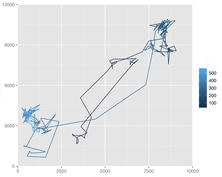Publication trimestrielle du Laboratoire
d'analyse et d'architecture des systèmes du CNRS
Robots are no longer going to be isolated machines working in factory or merely research platforms used in controlled lab environment. Very soon robots will be the part of our day-to-day lives. Whether it is street, office, home or supermarket, robots will be there to assist and serve us. For such robots to be accepted and appreciated, they should explicitly consider the presence of human and social factors in all their planning and decision making strategies, whether it is for motion, manipulation or interaction. The thesis first derives motivation from the child development and human behavioral psychology research and identifies basic socio-cognitive aspects ranging from perspective-taking, social navigation behaviors, cooperative planning, proactive behaviors to learning task semantics from demonstration. We will introduce new terms and concepts from Human Robot Interaction (HRI) point of view. We will further develop frameworks by identifying key ingredients of these aspects, to equip the robots with basic socio-cognitive intelligence.In the context of socially acceptable navigation of a robot, it is a must that the robot should no longer treat us, the human, only as dynamic obstacles in the environment. For example the robot should even decide to take a longer path, if it is satisfying the human's desire and expectation and not creating any confusion, fear, anger or surprise by its motion.Similarly for the task when the robot has to guide a person from his/her current position to another place, it should support the person's activities and guide him/her in the way he/she wants to be guided. If required, the robot should exhibit goal oriented approaching and re-engagement behaviors.A human friendly robot should neither be over-reactive nor be simple wait and move machine.On the other hand in a cooperative Human-Robot Interactive manipulation scenario, various human-oriented decisions making are required, e.g. where and how to grasp and put an object so that human can take it with least effort, where and how to show an object to the human, etc. All these require the robot to analyze abilities and affordances of the human, beyond the reasoning on stability of object's grasp and placement.Capability to generate a shared plan for solving day-to-day tasks is another important aspect for cooperative robots. This requires reasoning on effort and current state and desire of the agent to decide about the amount, extent and method of cooperation.Another aspect of socio-cognitive interaction is behaving proactively. This requires the robots to be capable of reasoning about how to behave proactively, where to behave proactively to support ongoing interaction or task.As depending upon the situation, the same task could be performed in entirely different ways. Hence, the robot should be able to autonomously understand the goal of the demonstrated task, i.e. what does the task mean in terms of desired effect, that too at appropriate level of abstractions. It requires reasoning beyond just imitating at the levels of trajectory and sub-actions.This thesis focuses on these issues, which raise new challenges that cannot be handled appropriately by simple adaptation of state of the art robotics planning, control and decision making techniques. Implementation results on different types of real robots (PR2, HRP2, Jido,...) will show the proof of concept of the developed frameworks. This is a step towards Socially Intelligent Robots with the vision to build a base for developing more complex socio-cognitive robot behaviors for future co-existence of human and robots in complete harmony.





